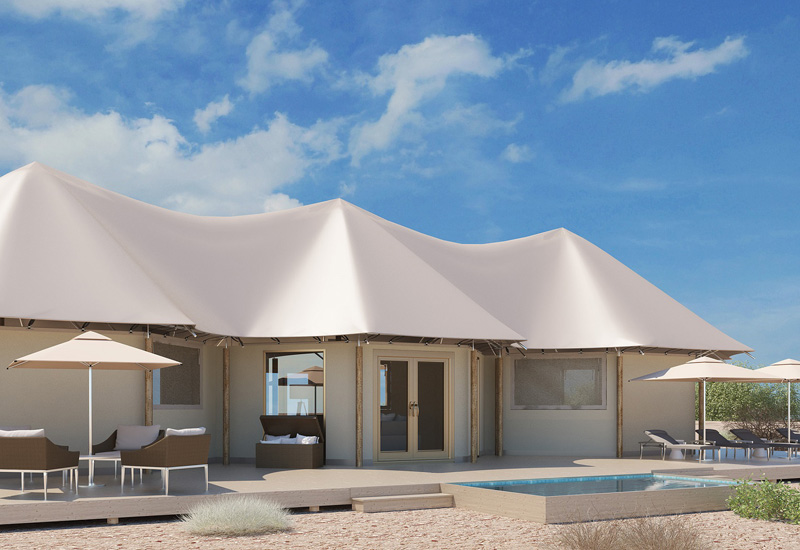The Sharjah Investment and Development Authority (Shurooq) is nearing completion of the Kalba Kingfisher Lodge, its latest eco-tourism project, in collaboration with the Sharjah Environment and Protected Areas Authority (EPAA).
The venture is part of Shurooq’s strategy to provide sustainable tourist destinations in the region.
The five-star Kalba Kingfisher Lodge, due to be completed by the end of the first half of 2017, will house 20 luxury tents. However, Shurooq hasn’t clarified whether it will tie up with an operator to manage the property.
With a private swimming pool for each tent, the accommodation is designed to provide guests with comfort and privacy, overlooking the Indian Ocean and a forest of mangrove (Qurm) trees surrounding the lodge – also home to a number of kingfishers and a host of flora and fauna.
The lodge will include an outdoor yoga and wellness centre and a range of public facilities, including restaurants and outdoor recreational areas.
The tented lodge is being constructed in compliance with global standards of green and sustainable building in order to have minimal impact on the surrounding environment.
Shurooq CEO HE Marwan bin Jassim Al Sarkal said: “There are so many parts of Sharjah which qualify as outstanding areas of natural beauty and we have identified that there are numerous hospitality opportunities which could cater to that market. We understand that there are a growing number of eco-tourists, and a shift in trends towards visitors who want to enjoy incredible natural surroundings in a luxury environment. The Kalba Kingfisher Lodge is an ideal fit for that market."
He added: “Shurooq has a long-term commitment to the implementation of sustainable and eco-friendly projects as well as tourist and leisure destinations, most notably the Mleiha Archeological and Ecotourism project and Kalba Eco-Tourism Project.”
In order to abide by its commitment to environmental sustainability and the protection of the surrounding environment, Shurooq decided that construction work will be completed outside the reserve, and ready-made structures will then be transferred and installed at the project site to avoid the harmful impact of construction waste on the natural environment.
Article continues on Page 2...

| Advertisement |









 Search our database of more than 2,700 industry companies
Search our database of more than 2,700 industry companies









